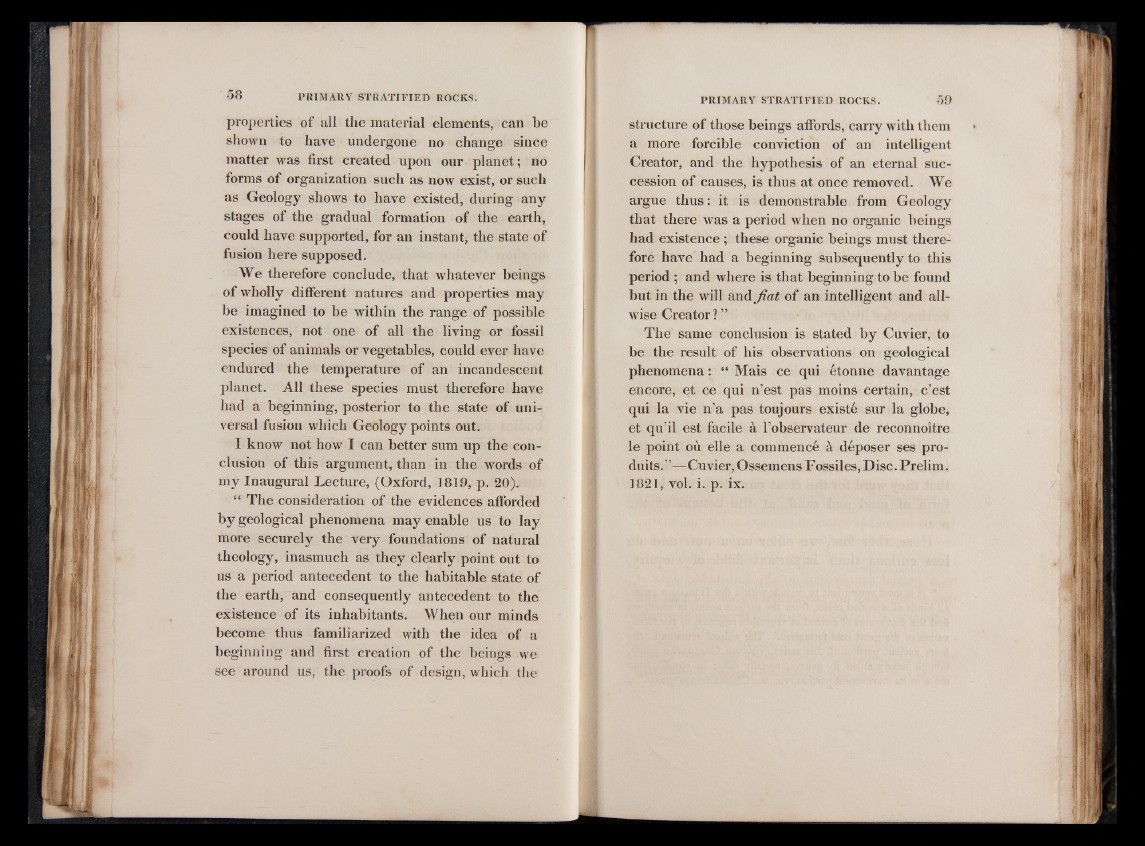
properties of all the material elements, can be
shown to have undergone no change since
matter was first created upon our planet; no
forms of organization such as now exist, or such
as Geology shows to have existed, during any
stages of the gradual formation of the earth,
could have supported, for an instant, the state of
fusion here supposed.
We therefore conclude, that whatever beings
of wholly different natures and properties may
be imagined to be within the range of possible
existences, not one of all the living or fossil
species of animals or vegetables, could ever have
endured the temperature of an incandescent
planet. All these species must therefore have
had a beginning, posterior to the state of universal
fusion which Geology points out.
I know not how I can better sum up the conclusion
of this argument, than in the words of
my Inaugural Lecture, (Oxford, 1819, p. 20 ).
“ The consideration of the evidences afforded
by geological phenomena may enable us to lay
more securely the very foundations of natural
theology, inasmuch as they clearly point out to
us a period antecedent to the habitable state of
the earth, and consequently antecedent to the
existence of its inhabitants. When our minds
become thus familiarized with the idea of a
beginning and first creation of the beings we
see around us, the proofs of design, which the
structure of those beings affords, carry with them
a more forcible conviction of an intelligent
Creator, and the hypothesis of an eternal succession
of causes, is thus at once removed. We
argue thus : it is demonstrable from Geology
that there was a period when no organic beings
had existence ; these organic beings must therefore
have had a beginning subsequently to this
period ; and where is that beginning to be found
but in the will and fiat of an intelligent and allwise
Creator? ”
The same conclusion is stated by Cuvier, to
be the result of his observations on geological
phenomena : “ Mais ce qui étonne davantage
encore, et ce qui n’est pas moins certain, c’est
qui la vie n’a pas toujours existé sur la globe,
et qu’il est facile à l’observateur de reconnoitre
le point où elle a commencé à déposer ses produits.’
’— Cuvier, Ossemens F ossiles, Disc. Prelim.
1821, vol. i. p. ix.